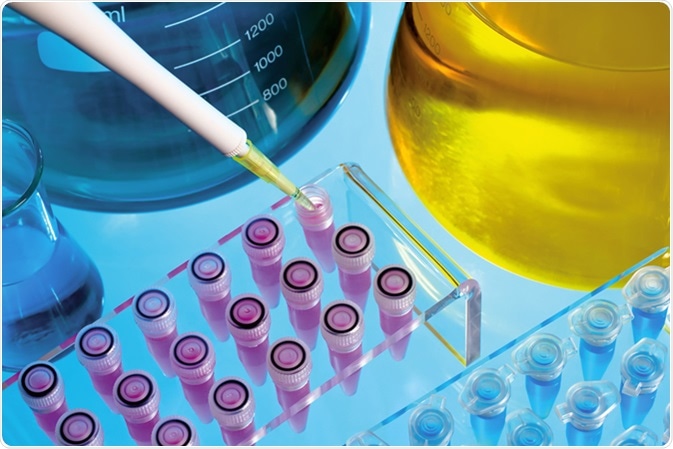Headspace solid-phase microextraction (HS-PME) is a technique which is used to prepare samples. This technique does not require the use of solvents, therefore it is suitable for preparing samples that are volatile, such as benzene, ethylbenzene, toluene and xylenes.

Image Credit: Angellodeco / Shutterstock
This process is quick, and other factors such as portability of the equipment, precision and great sensitivity make HS-PME an improved technique over other solid-phase extraction techniques. Separation of the compound occurs due to the equilibrium partition process occurring between the solid phase and the liquid sample. If a compound has a large coating/liquid partition coefficient, then the process could take longer due to the silica fiber being coated with a thin static layer of water. What this means is that more of the compound has to pass through the water layer to get to the solid phase.
How Does Headspace Solid-Phase Microextraction Work?
HS-PME is a modified version of solid-phase microextraction (S-PME), and has the advantage of having a shorter running time when compared to S-PME. It utilizes a silica fiber or “needle” that is coated with the solid phase, which can be solid or liquid. Typically, it is a polymeric organic liquid. This fiber is then placed into the “headspace” above the liquid sample.
The compound of interest then travels to the headspace and interacts with the solid phase in the silica fiber. The study by Zhang and Pawliszyn found that it is quicker to use the headspace, due to the fact that the movement of a volatile compound as a vapor is as much as four times higher than its movement in liquid form. This also means that the sample does not need to be fully liquid, as the compound is being concentrated in its vapor form.
To encourage more of the compound to move into vapor, the liquid sample should be stirred. This means that the surface of the liquid sample is constantly being refreshed, which would in turn encourage more of the compound to come to the surface to re-establish the equilibrium between the liquid and vapor phases.
The vapor in the headspace undergoes further analysis, which can be carried out by techniques such as gas chromatography (GC) or gas chromatography-mass spectrometry (GC-MS). Older techniques using a headspace to concentrate compounds have used a nitrogen cooled “trap” and the sample was “purged.” Alternatively, a gas-tight syringe could be used if the compound was concentrated enough. The “trap-purge” technique utilizes expensive equipment like nitrogen cooled traps, and several GC runs may be needed for each sample. The advantage of HS-PME is that it can overcome the limitation of these older techniques due to the sample concentrating effect of the silica fibers.
Why is Headspace Solid-Phase Microextraction Useful?
HS-PME is useful for extracting volatile compounds from the environment in order to measure the levels of these compounds in a given locale.
A study by Rodrigues and co. looked at developing a method using HS-PME coupled with GC-MS to detect levels of organophosphorus pesticides in cow’s milk. Organophosphorus pesticides are toxic to a lot of pests, and are thus the most common type of pesticide used in agriculture. These pesticides act on the central nervous system, and do not remain in the environment. Here, milk was chosen as a biomarker for pesticide contamination as it is one of the foods at the top of the food chain.
The study found that using polydimethylsiloxane/divinylbenzene fibers were the most optimal. The optimum headspace temperature was 90°C, and the optimum extraction time was 45 mins with stirring at 600rpm. Then, a desorption stage at 250°C was the optimum to extract the pesticides from the milk. Using these conditions, the authors found that trace amounts of organophosphate pesticides were able to be detected from milk.
Biocompatible solid phase microextraction: an interview with Candace Price (Merck KGaA)
Further Reading